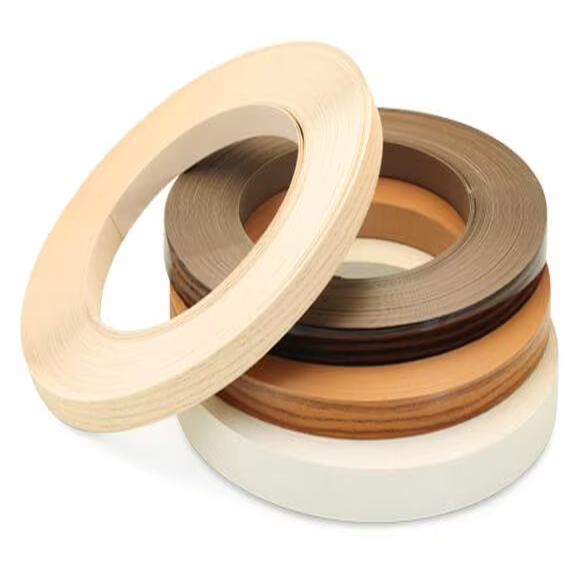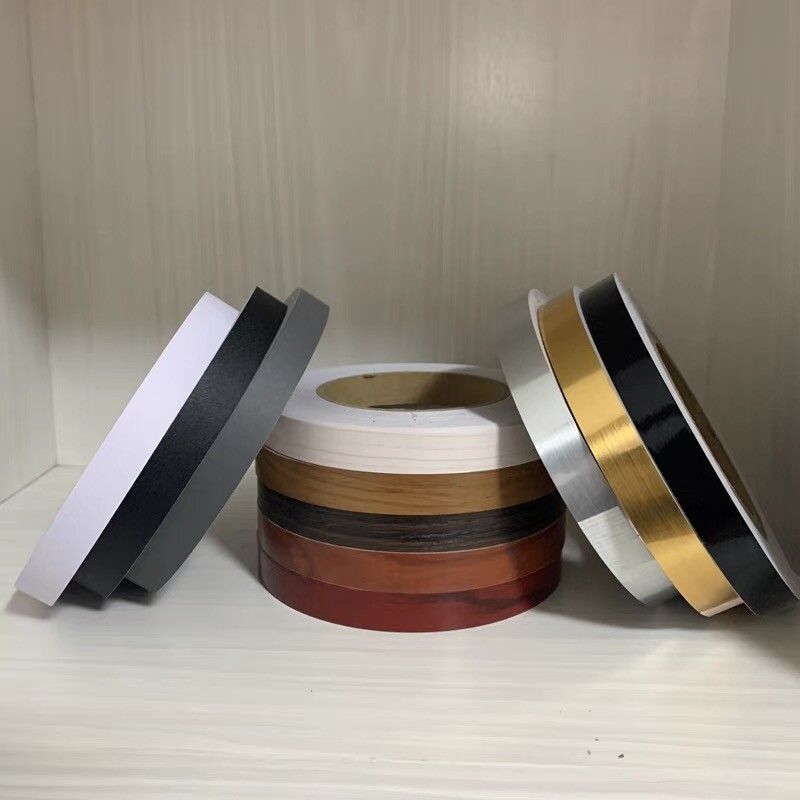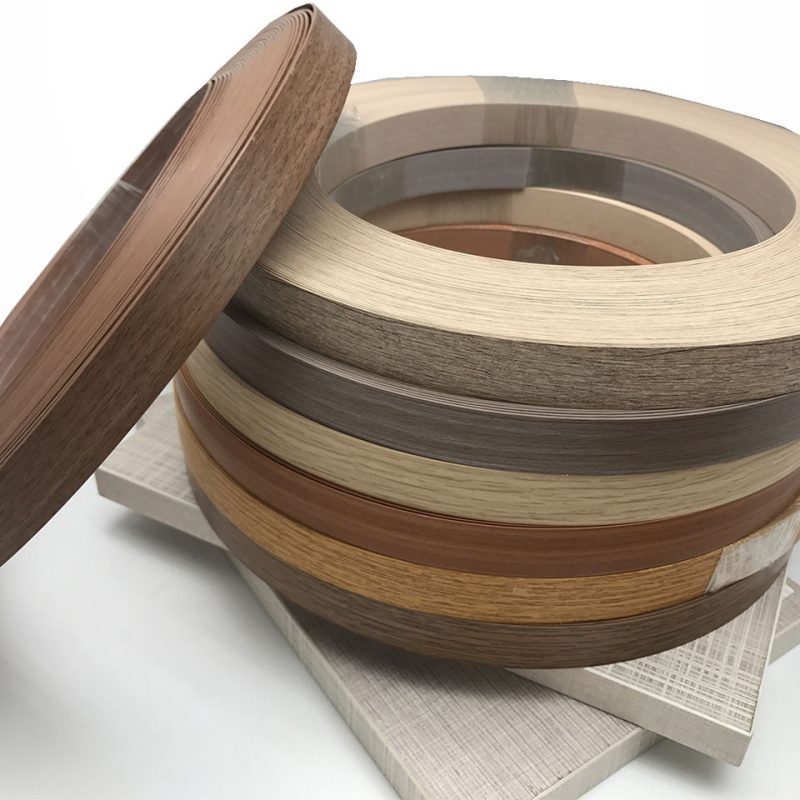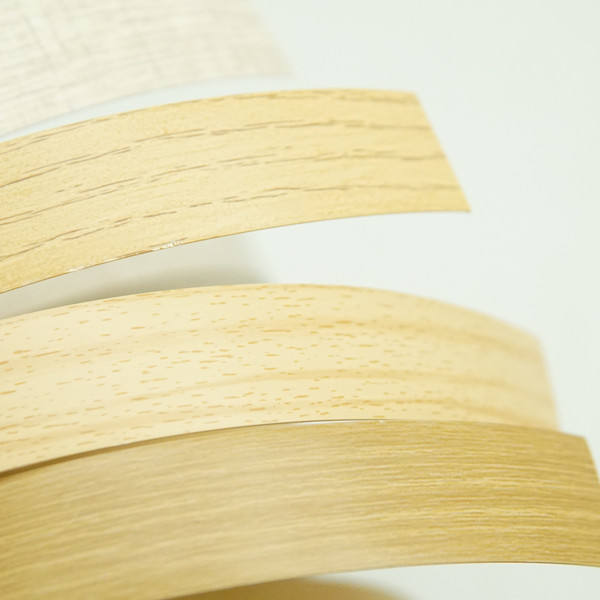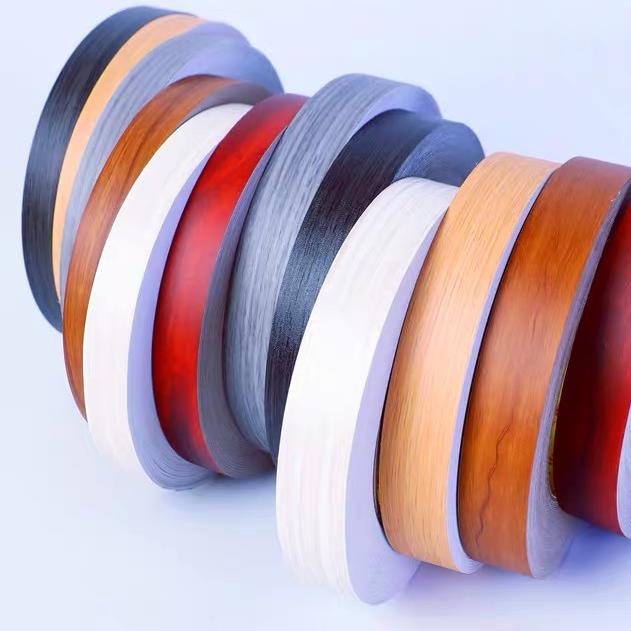We specialize in providing comprehensive furniture solutions, offering both ODM and OEM services.
News
The manufacturing process and differences of edge banding strips
In the field of furniture accessories, the manufacturing process of edge banding strips is like a hidden code, determining the texture and durability of the product. Different processes endow edge banding strips with distinct performance. The following are the common manufacturing processes, characteristics, and application scenarios of edge banding strips.
I. Extrusion molding process
This is the most typical process of PVC edge banding strips. After melting PVC particles at high temperatures, they are extruded into shape through molds. Its advantage lies in high production
efficiency, continuous batch production, and the ability to quickly produce edge banding strips of different specifications. The surface texture is formed by roller imprinting, with common basic
patterns such as wood grain and solid color, but the texture accuracy is relatively low and the three-dimensional effect is slightly weak. This process has good cost control and is suitable for the
mid-to-low-end furniture market. However, it has a shortcoming in weather resistance, and edge hardening and fading may occur after long-term use.
Ii. Injection Molding process
ABS edge banding strips mostly adopt this process. The ABS raw material is heated to a molten state and then injected into the mold. The most prominent feature is its high dimensional accuracy,
enabling complex cross-sectional designs, such as edge banding strips with snap-fit structures. The surface treatment is more delicate, with uniform gloss, strong chemical stability and resistance
to acid and alkali corrosion. Compared with the extrusion process, the products produced by the injection molding process have a higher density and better impact resistance, but their production
efficiency is slightly lower and the cost is relatively higher. They are mostly used in mid-to-high-end furniture or scenarios with special functional requirements.
Iii. Hot-pressing Lamination process
Melamine edge banding relies on this process, where melamine-impregnated paper is thermally pressed onto the base material. The core advantage is its outstanding environmental friendliness,
low formaldehyde emission, and compliance with health standards. The surface decorative layer can be printed with rich patterns, featuring high color reproduction and being less prone to fading.
The key points of the process lie in the control of hot pressing temperature and pressure. Insufficient temperature may lead to poor adhesion, while excessive temperature may cause carbonization
of the paper. Rich experience is required. Compared with the first two processes, it places more emphasis on surface decorative performance and has slightly inferior physical strength. It is suitable
for panel furniture with high requirements for environmental protection and appearance.
Iv. Solid Wood Processing Technology
Solid wood edge banding strips are made by traditional woodworking techniques through multiple processes such as material selection, planing and sanding. The most distinctive feature is its
natural texture. The wood grain is unique and blends seamlessly with solid wood furniture. However, due to the limitations of wood properties, it is prone to deformation caused by humidity, and
strict requirements are imposed on the moisture content of wood during the processing. Compared with industrialized processes, solid wood edge banding has lower production efficiency, higher
costs, and limited size specifications. It is mainly used in high-end custom furniture or products that pursue a natural style.
Comparison of process differences and selection logic:
From the perspective of physical properties, the ABS edge banding formed by injection molding has the best comprehensive strength, while the PVC edge banding formed by extrusion molding has
better flexibility. In terms of environmental protection, melamine edge banding strips that are hot-pressed and bonded have more advantages than solid wood edge banding strips. In practical
applications, mass-produced panel furniture mostly adopts extrusion or injection molding processes, while custom-made high-end products tend to use solid wood or hot-pressing processes.
Understanding these process differences can help consumers precisely select the appropriate edge banding products based on the furniture usage environment, budget and environmental protection
requirements.
Latest articles
 The excellent performance of edge-sealed plywood2025-05-23
The excellent performance of edge-sealed plywood2025-05-23 Personal DIY Plywood Edge Banding Guide2025-05-23
Personal DIY Plywood Edge Banding Guide2025-05-23 What are the similarities and differences between laser edge banding and ordinary edge banding?2025-05-22
What are the similarities and differences between laser edge banding and ordinary edge banding?2025-05-22 What Is PVC Edge Banding?2025-05-22
What Is PVC Edge Banding?2025-05-22 What materials are edge banding strips generally made of?2025-05-22
What materials are edge banding strips generally made of?2025-05-22
Ask For A Quick Quote
If you are looking for more information on our services, or how we could potentially help, we would love to hear from you!

